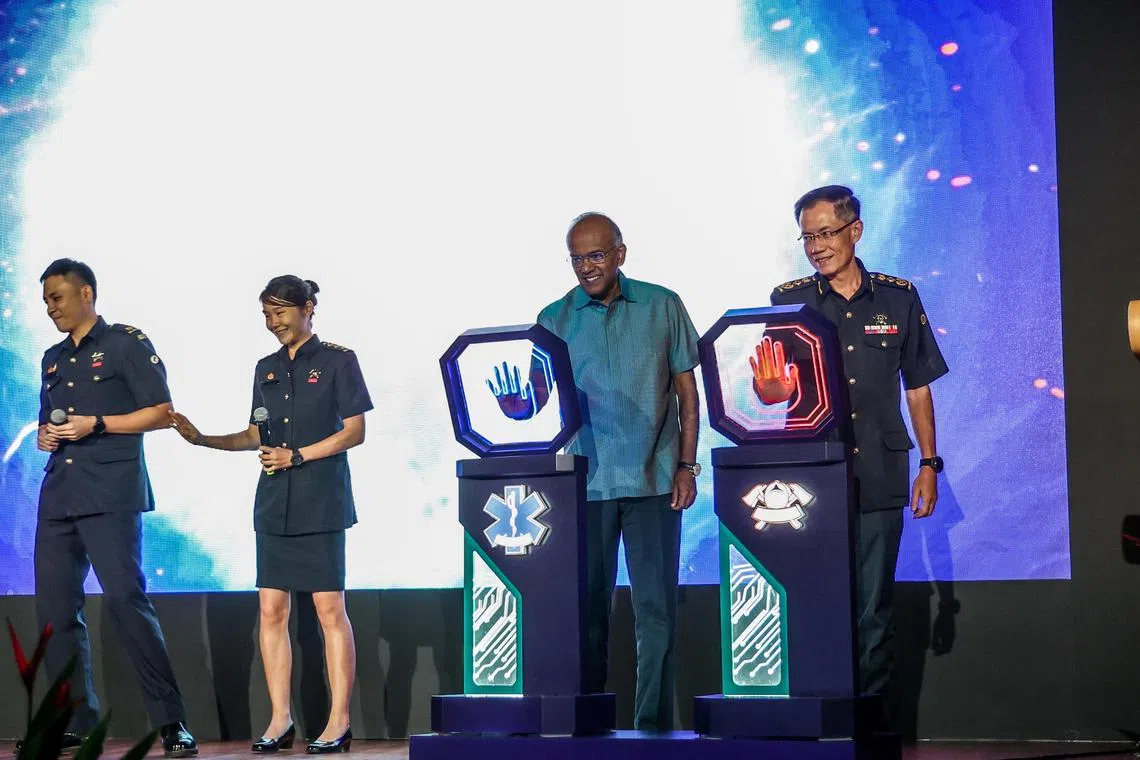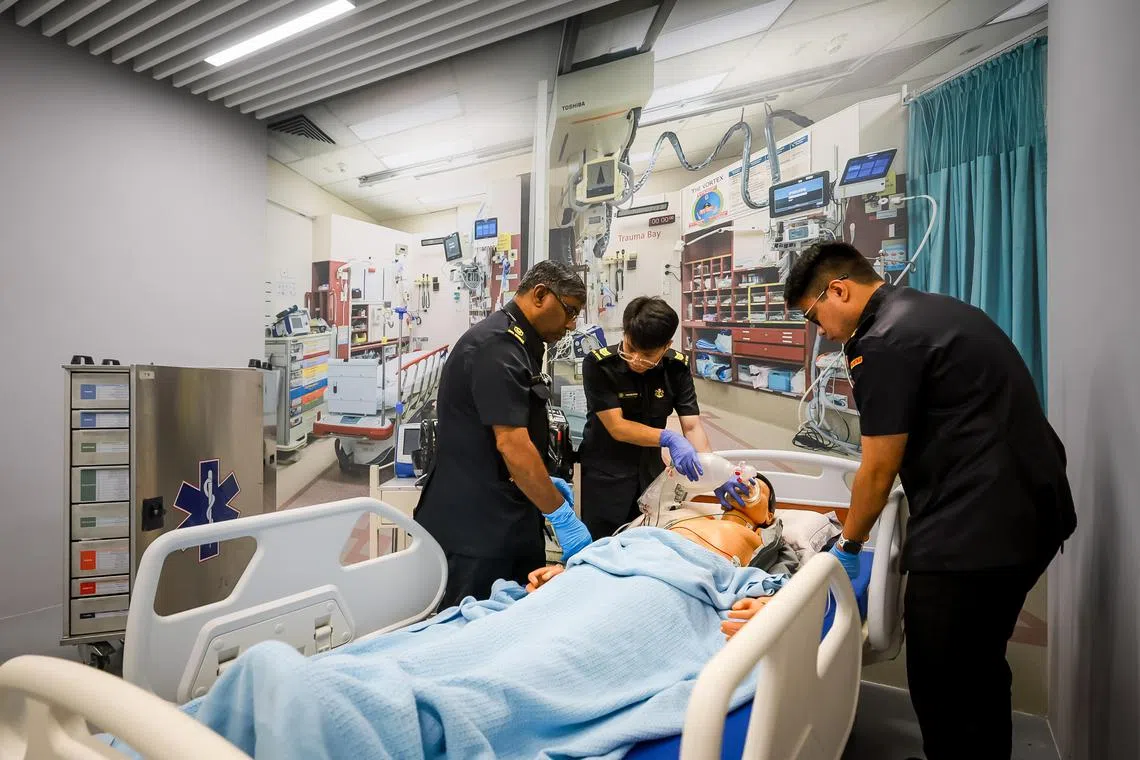New SCDF facilities where firefighters train to battle large fires, medical responders learn with VR
Sign up now: Get ST's newsletters delivered to your inbox
Follow topic:
SINGAPORE - The Singapore Civil Defence Force’s (SCDF) upgraded Civil Defence Academy (CDA) will not only prepare SCDF officers for evolving threats, but also allow them to scale their capabilities in future.
Home Affairs Minister K. Shanmugam officially opened new facilities such as the Fire Research Centre (FRC) and the National Emergency Medical Services Training Centre (NETC) at the annual SCDF workplan seminar on Monday.
“SCDF has made significant progress towards being a world-leading life-saving force. Singapore is one of the safest places in the world, in the context of civil and medical emergencies.”
Speaking at the CDA on Monday, Mr Shanmugam said: “In terms of facilities and technology, SCDF continues to invest in world-class facilities to better prepare our officers for the challenges on the front line.”
He was addressing more than 300 participants in Jalan Bahar, including SCDF officers and representatives from fire departments in Australia, Hong Kong and Malaysia. Minister of State for Home Affairs Muhammad Faishal Ibrahim also attended the event.
The FRC has testing and modelling capabilities to facilitate evidence-based results, which will raise SCDF’s science and research capabilities, said Commissioner Eric Yap.
“It is commonly acknowledged that in the firefighting profession, no firefighter is considered to have attained real proficiency in his business until he has mastered the combination of science, theory and practice,” he said.
The FRC is housed in a 17m by 30m fire-tile-clad building that stands 17m high, in which large-scale fires, which can surpass 1,000 deg C, can be recreated in a controlled setting.
The centre is equipped with a large calorimeter capable of measuring the heat energy released by a fire, as well as other sensors to measure various conditions such as oxygen consumption.
This will be used to study real-life cases or test SCDF’s hypotheses, to develop more effective firefighting strategies and safety measures.
CDA director Alan Chow told reporters last Friday: “When we first built CDA in 1999, it was a state-of-the-art facility. However, with the evolution of infrastructure and operational landscape, we knew we needed to develop new capabilities.”
The high-rise buildings of yesterday pale in comparison to skyscrapers today, and industrial buildings have become more complex, Assistant Commissioner Chow added.

The MRT System and train area in the Field Training Area at the Civil Defence Academy.
ST PHOTO: GAVIN FOO
New facilities like the flash point – an integrated training complex – will help to provide realistic training scenarios modelled after malls, offices, residences, hawker stalls and even MRT stations.
Firefighters tackle gas-powered flames in their day-to-day training. “Gas-powered flames burn quicker and cleaner, which makes it easier for us to control in our training simulations,” AC Chow explained.
But firefighters are also exposed to fires that involve ordinary combustibles such as wood or paper in the compartment fire behaviour training (CFBT). These are situations that firefighters face in real life, and having facilities like the CFBT will help build competency, he added.

The Fire Research Centre has testing and modelling capabilities to facilitate evidence-based results.
ST PHOTO: GAVIN FOO
From fire investigations to emergency care, SCDF officers will have to adapt to take on more roles.
Said AC Chow: “The important thing is how we can best optimise every individual to have multi-skill sets and mobility, especially as the manpower resource pool is getting smaller.”

Home Affairs Minister K. Shanmugam (second from right) said the SCDF has made significant progress towards becoming a world-leading life-saving force.
PHOTO: LIANHE ZAOBAO
Meanwhile, the new medical training wing NETC includes concept rooms with smart technology like virtual and mixed reality to mimic different environments, ambulance simulators and a resuscitation room.
The centre will form the core of SCDF’s medical training in handling patients, from the initial incident response all the way until they are handed over to hospitals, to enhance efficiency and preparedness.

The ambulance simulator at the National Emergency Medical Services Training Centre at the Civil Defence Academy.
ST PHOTO: GAVIN FOO
AC Chow said the eventual step will be to conduct joint training with hospital staff at the facility to prepare trainees for real scenarios.
This comes as SCDF expects an increase in the number of emergency medical services calls due to Singapore’s ageing population. In 2022, the force responded to around 700 calls daily – a 25 per cent increase compared with pre-pandemic levels.

The NETC includes concept rooms with smart technology like virtual and mixed reality to mimic different environments.
ST PHOTO: GAVIN FOO
On Monday, Commissioner Yap said: “We have implemented strategies to manage it, with a focus on prioritising life-threatening emergencies over others.”
In 2022, SCDF said the 995 operations centre will assess emergency calls


